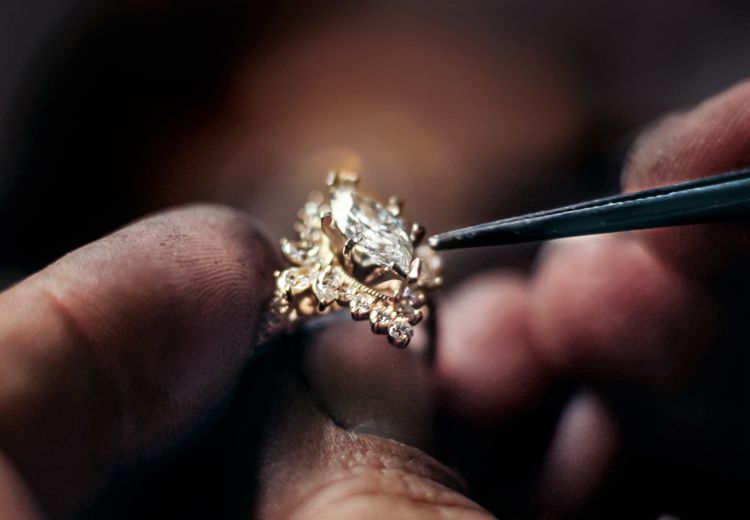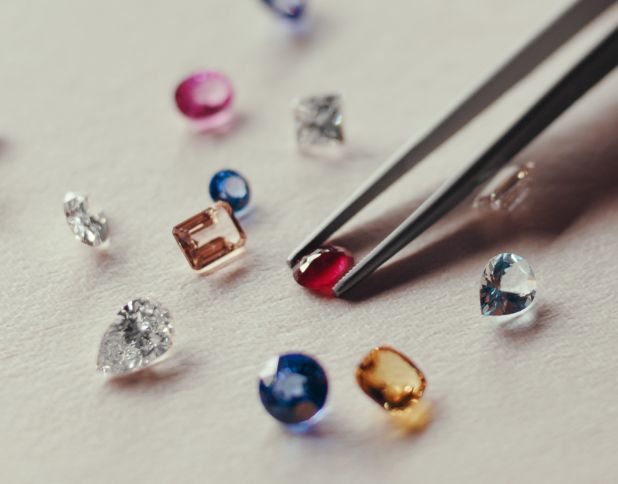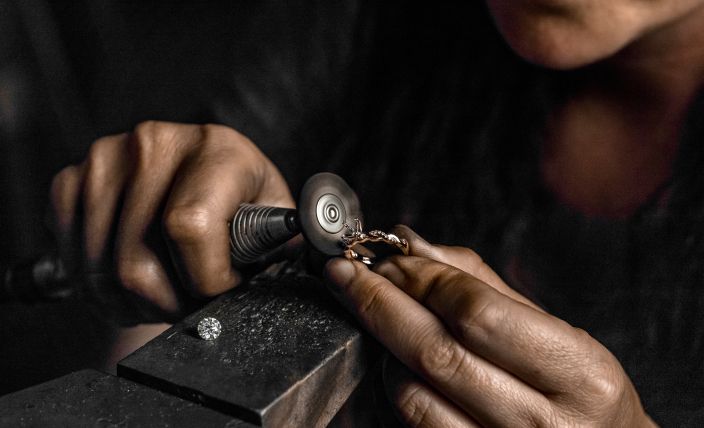Lab-Grown Diamonds and Alternatives to Diamonds
We are excited to share that lab-grown diamonds are now available in-store and online. Learn more about what makes lab-grown diamonds special, or see how they compare to natural diamonds.
Since the dawn of man, gems have been prized for their amazing beauty and rarity. It is precisely that rarity that makes them so valuable.
Unlike mass-produced commodities, diamonds and other rare gems are not always affordable in the size, quantity or quality admirers might desire. So there has always been a market for imitations and substitutes.
Synthetic diamond alternatives
We recommend natural white sapphires as an alternative to synthetic diamonds. Unlike synthetic diamonds, our white sapphires are completely natural and strong enough to be worthy of our Free Lifetime Warranty.
Shop White Sapphires
Rarity - the hallmark of genuine gemstones
Over the centuries, glass and inexpensive minerals have served as natural substitutes for gemstones. For example, a more common red mineral may fill the bill for a red gemstone when ruby is out of the price range. Quartz crystals masquerade as sparkling diamonds in accessories and apparel.
As technology has improved, so have the number and quality of man-made imitations. But there is always a difference between the imitation and the genuine gemstone.
The sincerest form of flattery
At Shane Co., you'll only find genuine gemstones - the wonders of nature that took billions of years to create, not a mere month. So when you give or wear a piece of our jewelry, you can be sure that it is set with gemstones that are one-of-a-kind - just like the individual who wears it. While many natural and synthetic substitutes are certainly attractive for inexpensive jewelry, they don't offer the romance or subtle qualities of the rare original.
Because there are many synthetic and treated gemstones out in the market, it's wise to know how they differ from the genuine article.
The materials substituted for particular gemstones in jewelry can be grouped into three categories: simulants, synthetics and assembled gemstones.
Simulants
These refer to any material - either natural or man-made - that is used to substitute for another gem material. Cubic Zirconia (CZ) is a prime example of a diamond simulant. Other man-made diamond simulants include synthetic rutile, strontium titanate and yttrium aluminum garnet (YAG). Even though the popular CZ has more fire (but less brilliance) than a diamond, it is definitely not "forever." A CZ is softer than a diamond, so it does not take as fine of a polish and its brilliance will fade over time.
Synthetics - These are laboratory-grown crystals with the same crystal structure and chemical composition as their natural counterparts. Synthetic emeralds, rubies and sapphires are common in the jewelry industry, often sold as "lab-created" gemstones or promoted under a trade name such as "Chatham Emerald."
Assembled Gemstones - These are more commonly known as doublets or triplets. Any combination of materials can be used to create an assembled gemstone. Typical examples are a gemstone with a sapphire crown glued to a glass pavilion, or an opal sandwiched between a clear quartz crown and cheaper opal base.
The inside track on diamond treatments
After World War II, it became possible to change a diamond's color using irradiation. Typically, only diamonds toward the bottom of the color scale are treated, because they can be more valuable if changed to an attractive yellow or green color. While they may approach the beauty of a natural diamond, a treated diamond will not command the same price - and the treatment must be disclosed. Shane Co. does not knowingly sell any color-treated diamonds.
Laser drilling is a permanent clarity enhancement sometimes used to change the appearance of particular inclusions. Diamonds that have been laser drilled are most commonly found in the lower clarity grades I1-I3. An accepted practice within the jewelry industry, laser drilling changes the color of a dark inclusion to a lighter one through bleaching, often making the inclusion less visible to the unaided eye.
Fracture-filled diamonds
Fracture filling is another method of improving the clarity of a diamond. It involves filling cleavages or openings within the diamond with one of several substances in an attempt to match the optical properties of the diamond. Fracture-filled diamonds are sometimes sold as "Yehuda" diamonds.
Shane Co. does not carry any fracture-filled diamonds for three important reasons: First, unlike laser drilling, fracture filling is not a permanent enhancement. Second, fracture-filled diamonds cannot be accurately graded for clarity, so we would be unable to assure their quality. Third, the fill material does not hold up to heat and prolonged cleaning methods.
A word about synthetic and treated diamonds
Unfortunately, some synthetic and clarity- or color-treated diamonds are being represented as genuine and naturally occurring. As diamond merchants, if we are to protect our customers and preserve our integrity, we must be extra vigilant. We need to know the sources of our diamond purchases and keep current on the technologies that make such deception possible.
Shane Co. has multiple safeguards in place to prevent selling a gemstone that was misrepresented. First, to assure that our gemstones are always genuine, we only buy directly from the world's largest, most prominent diamond and gemstone cutters. We tap the experience and knowledge of our Gemological Institute of America (GIA)-certified graduate gemologists who study each gemstone. We also participate in ongoing education programs to stay on top of the latest enhancements and man-made diamonds. So you can be confident that Shane Co. will never knowingly purchase and market a diamond that is intended to deceive.









